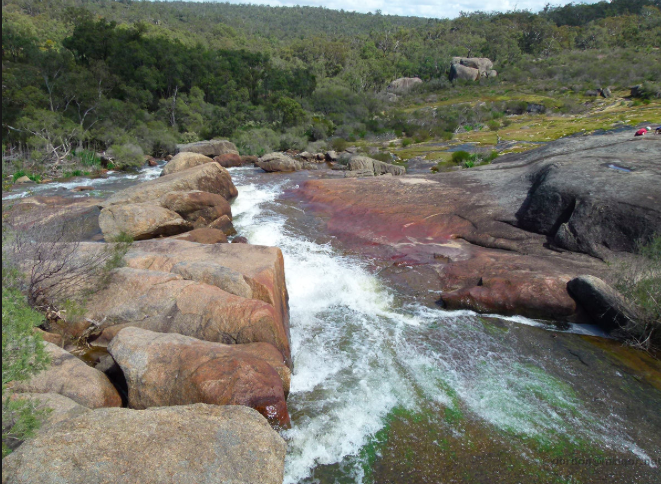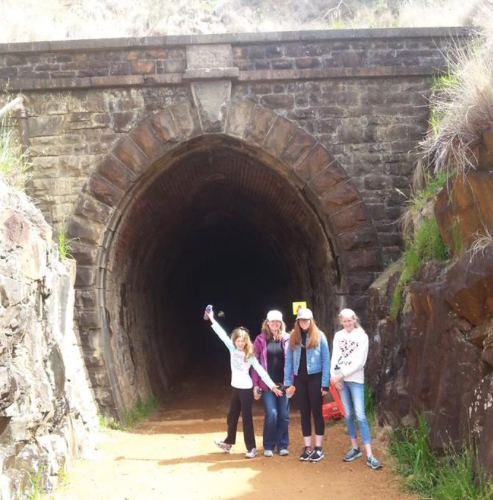JOHN FORREST NATIONAL PARK
- Hike, Waterfall, Historical
- Oct 3, 2016
- 3 min read
John Forrest National Park is located in Hovea, about 24km east of Perth. With two stunning waterfalls, historical sites and great walk trails, it's a great day out.
Eagle View Trail:
This trail is a full day 15km loop hike. It's flat at places, but there are quite a few steep areas which have stairs to make it easier. The paths on this trail are quite narrow and are marked with yellow metal plates with eagles on them. Eagle View Trail is absolutely gorgeous. Most of the time you're walking by a stream from the waterfalls, but other times you're further away and surrounded by wildflowers that are absolutely gorgeous this time of year. National Park Falls:
National Park Falls is one of the two waterfalls at John Forrest National Park. It's quite big, and after decent rainfall the water gushing through is absolutely spectacular. I've been to John Forrest National Park twice with my family- the first in summer when it was completely dry, and the second mid-spring after rainfall. At the top of the falls is a bridge across and plenty of rocks to sit down, admire the view and have a picnic. Further down the falls is a lookout, again with plenty of rocks around. The lookout is a few metres back from the base of the falls, giving an entirely different but still amazing view of National Park Falls.
Hovea Falls:
Hovea Falls is a flatter waterfall in comparison to the steep National Park Falls. The best official view comes from approaching the falls on the trail, with no lookouts here. However climbing around on rocks can provide better views, however be very careful as rocks can be slippery. Swan View Railway Tunnel:
A railway used to run through the area, the wide gravel paths near the Swan View Railway Tunnel indicating where the tracks were. The Swan View Railway Tunnel is, of course, a tunnel which trains used to come through when the line was in use (1896-1966). It is quite dark so it's recommended to bring a torch. It might just have been because of the heavy rainfall in the few days prior to our visit, but the tunnel was quite wet in places. Mostly at the exit to the tunnel were large puddles which we managed to get across without getting wet by hopping from on submerged stone to the other until we got to dry ground. The ground is covered in loose stone. Along the walls of the tunnel are spaces where you can stand off where the tracks would be. This is because in the times when the train was used pedestrians would be walking along the tunnel. When they heard the train coming they would have to get off the tracks, but wouldn't have enough time to run out of the tunnel and move aside for the train. Instead, when the train was heard they would step into the spaces to get off the tracks.
The train crash occurred on the 30th of June 1942 when a coupling on a goods and passenger train broke. The train was derailed and crashed, killing seven horses and one person.
Price:
National Park entry fees do apply- $12 a car.

Rating: 4.5 Stars
An absolutely gorgeous place that I definitely recommend. The only downside would be that it's a well known place visited by a lot of people, which was a bit tricky on the narrow trails. Overall an absolutely stunning place, especially National Park Falls, the wildflowers, the trail and the history. Highly recommend!















Comments